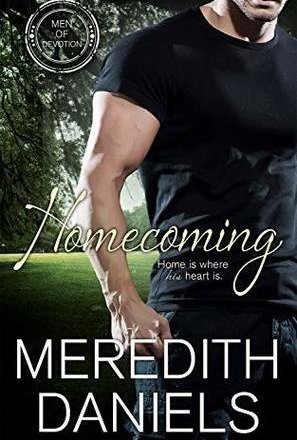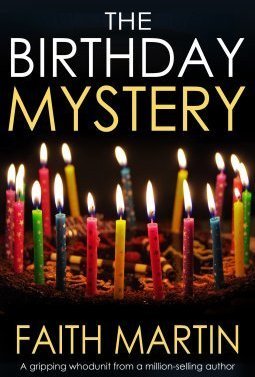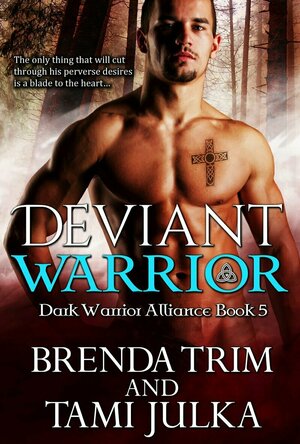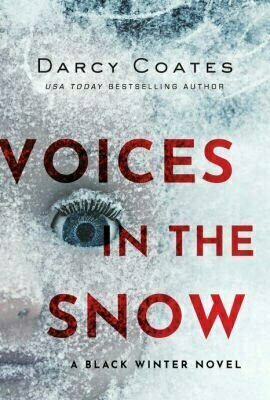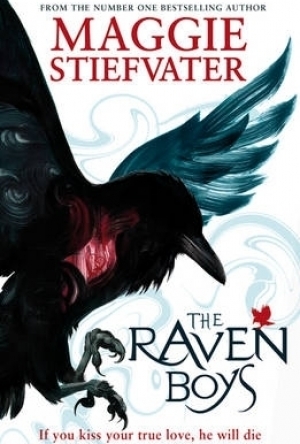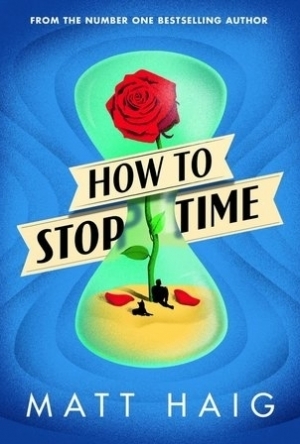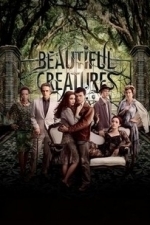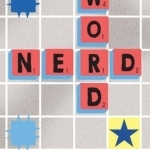Search
Debbiereadsbook (1570 KP) rated Homecoming (Men of Devotion #1) in Books
Mar 29, 2019
great read, loved it!
Homecoming, arch, 4 stars, male/male, romance, friends to lovers, military dudes, first time author
Independent reviewer for Archaeolibrarian, I was gifted my copy of this book.
Jack returns home, after a botched mission leaves him 5 days in hell. He is bruised and broken. But coming home be the hardest thing he has done, especially when it brings him face to face with the only man he ever loved. The man who hates him for breaking his sister’s heart. The man in question, Dillon, doesn’t hate Jack as much as Jack thinks. When Dillon helps Jack with his PTSD, when Dillon’s touch makes Jack feel like he really DID come home, both men need to own their feelings for each other. But it takes Dillon’s sister to make Jack see.
I love reading about broken soldiers coming home, and this was no exception!
Jack is broken, inside and out, bones and mind. Five days in hell and he has been given six weeks of mandatory leave and for the first time in ten years, he goes home. Home to his mum and dying father. Home to the memories that are burned on his mind from the last time he was here. Home to where Dillon might be. He doesn’t know which is worse: facing Dillon, or NOT. I loved that Jack didn’t know! Dillon, though. He knows. He knows he wants to see Jack. Seeing the man who has held his heart for long in so much pain calls to him. He wants Jack, but he wants Jack to come to him. And when they do? It was beautiful! But Jack spoils it by running! Stoopid man thinks now he’s “got Dillon out his system” he’ll be able to lay it to rest. But Dillon is far more than a “get out of my system” kinda man, and it takes Dillon’s sister, and Jack’s mum, to make Jack see, to really SEE how much he cannot let Dillon go!
It’s only short, some 90 pages, but packs quite a punch. Both Jack and Dillon have their say, and in the third person. Each voice is clear and defined.
I read some reviews AFTER I read this, I don’t do it before. I made that mistake once and never again. Most of the reviews I found were from 2014, and not very good. I wonder has this been revised since. I found none of the problems that are mentioned! Also, I can’t find anything else by this author. So, given this is a FIRST-time author, I’ll say this is a very VERY good start.
4 solid stars
**same worded review will appear elsewhere**
Independent reviewer for Archaeolibrarian, I was gifted my copy of this book.
Jack returns home, after a botched mission leaves him 5 days in hell. He is bruised and broken. But coming home be the hardest thing he has done, especially when it brings him face to face with the only man he ever loved. The man who hates him for breaking his sister’s heart. The man in question, Dillon, doesn’t hate Jack as much as Jack thinks. When Dillon helps Jack with his PTSD, when Dillon’s touch makes Jack feel like he really DID come home, both men need to own their feelings for each other. But it takes Dillon’s sister to make Jack see.
I love reading about broken soldiers coming home, and this was no exception!
Jack is broken, inside and out, bones and mind. Five days in hell and he has been given six weeks of mandatory leave and for the first time in ten years, he goes home. Home to his mum and dying father. Home to the memories that are burned on his mind from the last time he was here. Home to where Dillon might be. He doesn’t know which is worse: facing Dillon, or NOT. I loved that Jack didn’t know! Dillon, though. He knows. He knows he wants to see Jack. Seeing the man who has held his heart for long in so much pain calls to him. He wants Jack, but he wants Jack to come to him. And when they do? It was beautiful! But Jack spoils it by running! Stoopid man thinks now he’s “got Dillon out his system” he’ll be able to lay it to rest. But Dillon is far more than a “get out of my system” kinda man, and it takes Dillon’s sister, and Jack’s mum, to make Jack see, to really SEE how much he cannot let Dillon go!
It’s only short, some 90 pages, but packs quite a punch. Both Jack and Dillon have their say, and in the third person. Each voice is clear and defined.
I read some reviews AFTER I read this, I don’t do it before. I made that mistake once and never again. Most of the reviews I found were from 2014, and not very good. I wonder has this been revised since. I found none of the problems that are mentioned! Also, I can’t find anything else by this author. So, given this is a FIRST-time author, I’ll say this is a very VERY good start.
4 solid stars
**same worded review will appear elsewhere**
Midge (525 KP) rated The Birthday Mystery in Books
Dec 29, 2018
Strong characters (2 more)
Good mystery
Great for food-lovers
Great Whodunit!
Over recent months I've become a great fan of cozy mysteries so, when I saw a new series featuring Jenny Starling being launched, I knew I had to read "The Birthday Mystery." Also, it has a culinary theme which I love and a little light humour.
First, we are introduced to Jenny who is catering for the twenty-first birthday party of upper-class twins, Alicia and Justin. In her late twenties, Jenny is an impressive woman. Curvaceous and sexy, she’s a modern single woman, living the lifestyle that suits her – that of a travelling cook. Her famous father is a ‘celebrity’ cook, divorced from Jenny’s mother. Jenny is happy travelling the country catering for events and cooking great food. She is on a mission to bring back traditional home cooked food and to offer new and exciting recipes made with fresh ingredients. She arrives at the twins family country house located in a picturesque and charming village and is immediately met by the police. A young man has drowned in the pond. Was it an accident or murder?
The birthday party goes ahead and then, just after midnight, everyone gathers for a champagne toast . . . and one of the guests falls down dead. The police are baffled and there is a whole party full of suspects.
Jenny finds crime very distracting, especially when there is chocolate to temper or pike to poach. She is very observant, with an agile mind and an amazing ability to interpret clues and hidden meanings. Her wit and sense of humour help her sanity when all around her, people are dropping like flies. When it comes to someone possibly adding the extra ingredient of poison to her own precious recipes, Jenny isn't going to take it lying down. She has a reputation to protect.
Jenny Starling won't stop until the murderer is found.
There are many suspects in this mystery, clues a-plenty and red herrings all the way through this book. It was a thoroughly satisfying read and I often found myself asking the same questions as Jenny and I was kept in suspense to the end. The pacing in "The Birthday Mystery" was very good and I never lost interest, as it wasn't long before something intriguing would happen. Things came together for a great finish and wrapped everything up very neatly.
I'm definitely looking forward to reading the next novel featuring Jenny Starling very soon and other books by the author, Faith Martin. "The Birthday Mystery" whets your appetite for more to come.
My thanks to NetGalley, Joffe Books and the author for providing me with an advanced copy of this novel.
First, we are introduced to Jenny who is catering for the twenty-first birthday party of upper-class twins, Alicia and Justin. In her late twenties, Jenny is an impressive woman. Curvaceous and sexy, she’s a modern single woman, living the lifestyle that suits her – that of a travelling cook. Her famous father is a ‘celebrity’ cook, divorced from Jenny’s mother. Jenny is happy travelling the country catering for events and cooking great food. She is on a mission to bring back traditional home cooked food and to offer new and exciting recipes made with fresh ingredients. She arrives at the twins family country house located in a picturesque and charming village and is immediately met by the police. A young man has drowned in the pond. Was it an accident or murder?
The birthday party goes ahead and then, just after midnight, everyone gathers for a champagne toast . . . and one of the guests falls down dead. The police are baffled and there is a whole party full of suspects.
Jenny finds crime very distracting, especially when there is chocolate to temper or pike to poach. She is very observant, with an agile mind and an amazing ability to interpret clues and hidden meanings. Her wit and sense of humour help her sanity when all around her, people are dropping like flies. When it comes to someone possibly adding the extra ingredient of poison to her own precious recipes, Jenny isn't going to take it lying down. She has a reputation to protect.
Jenny Starling won't stop until the murderer is found.
There are many suspects in this mystery, clues a-plenty and red herrings all the way through this book. It was a thoroughly satisfying read and I often found myself asking the same questions as Jenny and I was kept in suspense to the end. The pacing in "The Birthday Mystery" was very good and I never lost interest, as it wasn't long before something intriguing would happen. Things came together for a great finish and wrapped everything up very neatly.
I'm definitely looking forward to reading the next novel featuring Jenny Starling very soon and other books by the author, Faith Martin. "The Birthday Mystery" whets your appetite for more to come.
My thanks to NetGalley, Joffe Books and the author for providing me with an advanced copy of this novel.

Record your music, sing - nana
Music and Social Networking
App Watch
Sing, Play, Create and Share your music worldwide. From beginner to professional, nana provides a...
Lyndsey Gollogly (2893 KP) rated Deviant Warrior (Dark Warrior Alliance #5) in Books
Aug 17, 2021
133 of 250
Kindle
Deviant Warrior ( Dark warrior Alliance book 5)
By Brenda Trim and Tami Julka
Once read a review will be written via Smashbomb and link posted in comments
Of all the Dark Warriors, Kyran Tarakesh is the most aberrant. Having witnessed the brutal murder and rape of his mother seven centuries ago, his sexual preferences are twisted and perverse. He walks the razors edge of control and he likes it that way, until he loses that balance and accidentally kills one of his lovers. As second in line to the Vampire throne, he is precariously close to losing his position, not to mention the respect of his brother and fellow warriors. Just when he thinks it can't get any worse, the Goddess proves him wrong. With her wicked sense of humor, the Goddess catapults him to the dragon realm of Khoth with Mackendra Callaghan, the very human he has been lusting about for months since meeting her. Mackendra not only plunges a knife deep into his heart, she flees and fights him at every turn, inflaming his desires. The surprises keep coming when he discovers she is his Fated Mate. Every belief he has ever had about intimacy is called into question when his mate gives him a taste of true pleasure for the first time. The passion that burns between them is hot enough to burn them to cinders, but he still must dispel her prejudices about vampires and break through her barriers or lose the other half of his soul forever. Mackendra is the leader of a vigilante group that hunts and kills vampires. Sarcasm, snark and weapons of titanium are the tools of her trade, and have shielded her hardened heart. When she is rescued from her burning house by a sexy stranger, she is propelled into an unfamiliar world. Her savior turns out to be a vampire of all things, and she doesn't take kindly to being stranded with the blood-sucker, much less teaming up with him in order to return to earth. She can handle her intense sexual attraction to him, but is terrified when it turns into emotional bonding. Her greatest problem is that she doesn't know how to let go of her past to accept her future. Will she rescue the blood-sucker that is slowly winning her heart or hold fast to her mission to eliminate all vampires?
Pretty much what I have come to expect from this series now although this one had more creature and Dragons I love Dragons!! It was a nice read and would recommend it. I t always amuses me how they get flung into an unknown dimension and still find to get hot and heavy while trying to get home and escape Ogres 😂😂😂
Was a 3.5 out 5!
Kindle
Deviant Warrior ( Dark warrior Alliance book 5)
By Brenda Trim and Tami Julka
Once read a review will be written via Smashbomb and link posted in comments
Of all the Dark Warriors, Kyran Tarakesh is the most aberrant. Having witnessed the brutal murder and rape of his mother seven centuries ago, his sexual preferences are twisted and perverse. He walks the razors edge of control and he likes it that way, until he loses that balance and accidentally kills one of his lovers. As second in line to the Vampire throne, he is precariously close to losing his position, not to mention the respect of his brother and fellow warriors. Just when he thinks it can't get any worse, the Goddess proves him wrong. With her wicked sense of humor, the Goddess catapults him to the dragon realm of Khoth with Mackendra Callaghan, the very human he has been lusting about for months since meeting her. Mackendra not only plunges a knife deep into his heart, she flees and fights him at every turn, inflaming his desires. The surprises keep coming when he discovers she is his Fated Mate. Every belief he has ever had about intimacy is called into question when his mate gives him a taste of true pleasure for the first time. The passion that burns between them is hot enough to burn them to cinders, but he still must dispel her prejudices about vampires and break through her barriers or lose the other half of his soul forever. Mackendra is the leader of a vigilante group that hunts and kills vampires. Sarcasm, snark and weapons of titanium are the tools of her trade, and have shielded her hardened heart. When she is rescued from her burning house by a sexy stranger, she is propelled into an unfamiliar world. Her savior turns out to be a vampire of all things, and she doesn't take kindly to being stranded with the blood-sucker, much less teaming up with him in order to return to earth. She can handle her intense sexual attraction to him, but is terrified when it turns into emotional bonding. Her greatest problem is that she doesn't know how to let go of her past to accept her future. Will she rescue the blood-sucker that is slowly winning her heart or hold fast to her mission to eliminate all vampires?
Pretty much what I have come to expect from this series now although this one had more creature and Dragons I love Dragons!! It was a nice read and would recommend it. I t always amuses me how they get flung into an unknown dimension and still find to get hot and heavy while trying to get home and escape Ogres 😂😂😂
Was a 3.5 out 5!
Hadley (567 KP) rated Voices in the Snow in Books
Feb 16, 2021
Horror (2 more)
Well-written detail
Atmosphere
Awkward characters (1 more)
Some inconsistencies
Winter is beginning to really show up for 2021 by blanketing the States in snow, which made this novel seem fitting to read this month, along with the isolated climate of quarantine which the two main characters go through in Darcy Coates' Voices in the Snow. This story is the first book in a four book series that is full of horror and mystery, and I couldn't seem to put it down - - - after the first 100 pages, the story steers off in a direction I didn't see coming.
Voices in the Snow is set in today's world, but at the beginning of a dystopian future in the UK, which mostly takes place at a large, desolate manor that sits just outside a forest called Banksy Forest. From the second chapter until the end, readers make their home here with the two main characters Clare and Dorran, but very shortly into the story, we realize that they aren't the only 'people' in the house.
The main question of the novel is whether or not Dorran can be trusted - - - Clare wakes up in his family's manor after a car accident, and she can't exactly remember how the accident happened, but she also can't remember why she was driving out in a blizzard in the first place, but she does recall that she was on the phone with her sister, Beth, and we learn that her sister worries about Clare like she's her mother. Clare becomes focused on trying to somehow contact Beth to let her know she's still alive.
We find out later that Dorran comes from a prestigious family that makes their money from being in the wood distribution business. His family, the Morthornes, aren't a typical family. Not only does Dorran's relatives live at the manor during the warmer months, but so do the servants, all 60 of them. Dorran makes it obvious that he doesn't enjoy this type of lifestyle:
" ' All right. I guess not. Especially in this house. How large is it [the house] ?'
'Inconveniently large.' He shrugged. 'It does not only house our family, but the servants as well.'
Clare's eyebrows rose. 'Servants?'
'Staff,' he corrected quickly. Clare thought she saw a flicker of embarrassment, but it was hidden almost immediately. 'My apologies. That is another part of tradition that is well outdated. My mother wishes for the staff to be referred to as servants.' "
Soon the two are discussing whether or not they could survive for months at the manor due to the blizzard not seeming to let up, with this discussion, readers find out there is an inside garden located in the depths of the manor, unfortunately, food wasn't planted since the family and servants leave the home for the winter, but there are plenty of seeds to start cultivating. One day while Clare is trying to get the seeds planted, she decides to go get Dorran, who left to go check on the many furnaces that heat the manor, but Clare easily gets lost in the house she has barely walked around in, and ends up in a wine cellar: here, Clare hears scraping noises that lead her to a creature huddled in the dark.
" The figure turned toward her. Eyes glinted - - - horrible, inhuman eyes peering out from behind long, greasy hair. Then the figure darted away, escaping from her circle of light, disappearing into a narrow doorway in the stone wall.
A sharp, broken scream cut through the cold air. Clare didn't realize it had come from her until she felt the ache in her throat. She stumbled backward, and her shoulders hit one of the shelves. Muffled clinking noises surrounded her as the bottles rocked.
She couldn't stop shaking. The thudding footsteps echoed around her, beating fast, like her own heart. The scraping noise joined it, louder this time. It surrounded her and overwhelmed her. "
Although Clare tells Dorran what she saw, he doesn't believe her. He believes that the stress from the car accident has caused her to hallucinate. Clare slowly begins to tell herself that he's probably right, but then the human-like creatures begin to show up more and more, always disappearing right before Dorran can see them. Shortly after an incident with another one of the creatures, Clare runs into Banksy Forest, set on getting the radio she remembered having in her car, to contact her sister Beth.
There are so many twists and turns in this story that it makes it wonderfully unpredictable. If I said anymore about it, it would give away too many of the surprises waiting inside. Voices in the Snow may not have been the best title for this book, but it is a really well-written horror story. The only annoyance I had with the novel is the awkwardness between the two main characters, which didn't seem natural. Most of what happens between Clare and Dorran are seen a mile away before it happens. During some scenes, I found myself rolling my eyes at the dialogue between Clare and Dorran, but the horror in the story makes up for the predictability of the characters.
I highly recommend this book to horror lovers; the scenes of scares and creatures were well-detailed. I was not disappointed at all. There were only a few inconsistencies throughout, but I think they would be easily over looked for the story is really enjoyable. I look forward to reading the rest of the series.
Voices in the Snow is set in today's world, but at the beginning of a dystopian future in the UK, which mostly takes place at a large, desolate manor that sits just outside a forest called Banksy Forest. From the second chapter until the end, readers make their home here with the two main characters Clare and Dorran, but very shortly into the story, we realize that they aren't the only 'people' in the house.
The main question of the novel is whether or not Dorran can be trusted - - - Clare wakes up in his family's manor after a car accident, and she can't exactly remember how the accident happened, but she also can't remember why she was driving out in a blizzard in the first place, but she does recall that she was on the phone with her sister, Beth, and we learn that her sister worries about Clare like she's her mother. Clare becomes focused on trying to somehow contact Beth to let her know she's still alive.
We find out later that Dorran comes from a prestigious family that makes their money from being in the wood distribution business. His family, the Morthornes, aren't a typical family. Not only does Dorran's relatives live at the manor during the warmer months, but so do the servants, all 60 of them. Dorran makes it obvious that he doesn't enjoy this type of lifestyle:
" ' All right. I guess not. Especially in this house. How large is it [the house] ?'
'Inconveniently large.' He shrugged. 'It does not only house our family, but the servants as well.'
Clare's eyebrows rose. 'Servants?'
'Staff,' he corrected quickly. Clare thought she saw a flicker of embarrassment, but it was hidden almost immediately. 'My apologies. That is another part of tradition that is well outdated. My mother wishes for the staff to be referred to as servants.' "
Soon the two are discussing whether or not they could survive for months at the manor due to the blizzard not seeming to let up, with this discussion, readers find out there is an inside garden located in the depths of the manor, unfortunately, food wasn't planted since the family and servants leave the home for the winter, but there are plenty of seeds to start cultivating. One day while Clare is trying to get the seeds planted, she decides to go get Dorran, who left to go check on the many furnaces that heat the manor, but Clare easily gets lost in the house she has barely walked around in, and ends up in a wine cellar: here, Clare hears scraping noises that lead her to a creature huddled in the dark.
" The figure turned toward her. Eyes glinted - - - horrible, inhuman eyes peering out from behind long, greasy hair. Then the figure darted away, escaping from her circle of light, disappearing into a narrow doorway in the stone wall.
A sharp, broken scream cut through the cold air. Clare didn't realize it had come from her until she felt the ache in her throat. She stumbled backward, and her shoulders hit one of the shelves. Muffled clinking noises surrounded her as the bottles rocked.
She couldn't stop shaking. The thudding footsteps echoed around her, beating fast, like her own heart. The scraping noise joined it, louder this time. It surrounded her and overwhelmed her. "
Although Clare tells Dorran what she saw, he doesn't believe her. He believes that the stress from the car accident has caused her to hallucinate. Clare slowly begins to tell herself that he's probably right, but then the human-like creatures begin to show up more and more, always disappearing right before Dorran can see them. Shortly after an incident with another one of the creatures, Clare runs into Banksy Forest, set on getting the radio she remembered having in her car, to contact her sister Beth.
There are so many twists and turns in this story that it makes it wonderfully unpredictable. If I said anymore about it, it would give away too many of the surprises waiting inside. Voices in the Snow may not have been the best title for this book, but it is a really well-written horror story. The only annoyance I had with the novel is the awkwardness between the two main characters, which didn't seem natural. Most of what happens between Clare and Dorran are seen a mile away before it happens. During some scenes, I found myself rolling my eyes at the dialogue between Clare and Dorran, but the horror in the story makes up for the predictability of the characters.
I highly recommend this book to horror lovers; the scenes of scares and creatures were well-detailed. I was not disappointed at all. There were only a few inconsistencies throughout, but I think they would be easily over looked for the story is really enjoyable. I look forward to reading the rest of the series.
Becs (244 KP) rated The Raven Boys in Books
Sep 22, 2019
Ronan Lynch, Adam Parrish, and Noah Czerny made this novel (1 more)
The rollercoaster of emotions you feel
The villain didn't offer as much as I'd like but it was too big of a letdown (1 more)
The MC wasn't my favorite but she had good complexities that made her unique
Deserves all the hype!
You can also find this review on my blog: bookingwayreads.wordpress.com
TRIGGER WARNINGS: suicidal ideation, (past) suicide attempt, violence, guns, death
REVIEW: Y’all, I think I found a new favorite series. This series… the characters… the world-building… the character development… UGH I absolutely adore everything about it. Ronan Lynch has my heart and Noah Czerny is such a babie and I want to protect him forever and ever. The Raven Boys gave me so much more than what I was expecting.
The Raven Boys follows Blue Sargent. But unlike her family of physics, seers, and clairvoyants, Blue has no magical abilities. She has been warned all her life that the first person she kisses, will die. One night, she sees a boy on the Corpse Road and this is a sign. The only way that a non seer sees a ghost is if that ghost is either a true love or the non-seer killed them. This is where the Raven Boys come into play.
The Raven Boys is basically the name of four boys that attend Aglionby – Gansey Richard III, Adam Parrish, Ronan Lynch, and Noah Czerny. Gansey is the so-called leader of the group and he’s on a mission to find the final resting place of Glendower, a Welsh King who passed away in Henrietta. There is a legend that says if he’s awoken, he grants the person who woke him a “favor”. Gansey wants to be the person to wake Glendower but he isn’t the only one looking for him.
I didn’t know too much about this series other than the writing style wasn’t the greatest. I didn’t really see a problem with this as I listened to them on audiobook. The narrator was not my favorite and some of the voices he used I didn’t feel worked with the characters. But all in all, I was really invested in the plot and paranormal aspect of Blue and the Raven Boys.
Speaking of Blue and the Raven Boys, they were so well-written! Each character within this novel was complex and had their own unique peculiarities that made them extremely interesting to read about. They were also really relatable. Even the situations that they each experienced, felt real and not at all cliche’d. Plus, all the sarcastic remarks had me howling with laughter, especially Ronan and Gansey’s friendship. It was *chefs kiss*
“We have to be back in three hours,” Ronan said. “I just fed Chainsaw but she’ll need it again.”
“This,” Gansey replied “is precisely why I didn’t want to have a baby with you.”
The characters that I found the most interesting, were honestly Ronan, Noah, and Adam. Blue was a great protagonist and had her complexities, but I didn’t feel anything special for her. Gansey was also an interesting character but I felt that the book revolved a bit too much about him and his mission. I wanted more scenes with Noah, Adam, and Ronan.
Ronan gave me all the bad boy vibes and has my heart while Noah is such a babie that I must protect. But if we’re talking great backstories and the main character in my book, I would say Adam takes that role. Adam’s story is honestly the best of them all. It was tragic, and made my heart hurt in more places than I expected that he had to go through what he did. I was taken on the biggest roller coaster ride I’ve ever been on and man, this book hit home – hard.
I was unable to put this down and I just wanted to keep listening to it. I was emotional because of the relationship with the OT5, driven due to the quest of finding Glendower and wanting to discover the truth. This is also the first book that I felt nothing for the “villain”. I mean if you know me, I’m always falling for the villain and here, I’m just like meh about him. He didn’t offer a ton to the story but he did offer just enough that without him, this story wouldn’t have made sense one bit.
Also, can we talk about all the foreshadowing within this novel? Cause holy guacamole! There was a ton. For example:
“Ronan said, “I’m always straight.”
Adam replied “Oh, man, that’s the biggest lie you’ve ever told.”
Like.. WHAT!? DO I SMELL A BUDDING ROMANCE? FRIENDS TO LOVERS MAYBE? Please let these two be a couple in the end, cause I need me a Ronan and Adam couple scene. DON’T LET ME DOWN MAGGIE!
The writing was beautiful, and I felt it flowed wonderfully. I got swept into the world of Cabeswater and I loved how you could actually feel like you were there alongside Blue and the Raven Boys.
Okay, before I make this any longer and bore y’all to death with my love for Ronan Lynch and Noah Czerny – just please… I beg of you to pick this up and give The Raven Boys a chance.
“The way Gansey saw it was this: if you had a special knack for finding things, it meant you owed the world to look.”
TRIGGER WARNINGS: suicidal ideation, (past) suicide attempt, violence, guns, death
REVIEW: Y’all, I think I found a new favorite series. This series… the characters… the world-building… the character development… UGH I absolutely adore everything about it. Ronan Lynch has my heart and Noah Czerny is such a babie and I want to protect him forever and ever. The Raven Boys gave me so much more than what I was expecting.
The Raven Boys follows Blue Sargent. But unlike her family of physics, seers, and clairvoyants, Blue has no magical abilities. She has been warned all her life that the first person she kisses, will die. One night, she sees a boy on the Corpse Road and this is a sign. The only way that a non seer sees a ghost is if that ghost is either a true love or the non-seer killed them. This is where the Raven Boys come into play.
The Raven Boys is basically the name of four boys that attend Aglionby – Gansey Richard III, Adam Parrish, Ronan Lynch, and Noah Czerny. Gansey is the so-called leader of the group and he’s on a mission to find the final resting place of Glendower, a Welsh King who passed away in Henrietta. There is a legend that says if he’s awoken, he grants the person who woke him a “favor”. Gansey wants to be the person to wake Glendower but he isn’t the only one looking for him.
I didn’t know too much about this series other than the writing style wasn’t the greatest. I didn’t really see a problem with this as I listened to them on audiobook. The narrator was not my favorite and some of the voices he used I didn’t feel worked with the characters. But all in all, I was really invested in the plot and paranormal aspect of Blue and the Raven Boys.
Speaking of Blue and the Raven Boys, they were so well-written! Each character within this novel was complex and had their own unique peculiarities that made them extremely interesting to read about. They were also really relatable. Even the situations that they each experienced, felt real and not at all cliche’d. Plus, all the sarcastic remarks had me howling with laughter, especially Ronan and Gansey’s friendship. It was *chefs kiss*
“We have to be back in three hours,” Ronan said. “I just fed Chainsaw but she’ll need it again.”
“This,” Gansey replied “is precisely why I didn’t want to have a baby with you.”
The characters that I found the most interesting, were honestly Ronan, Noah, and Adam. Blue was a great protagonist and had her complexities, but I didn’t feel anything special for her. Gansey was also an interesting character but I felt that the book revolved a bit too much about him and his mission. I wanted more scenes with Noah, Adam, and Ronan.
Ronan gave me all the bad boy vibes and has my heart while Noah is such a babie that I must protect. But if we’re talking great backstories and the main character in my book, I would say Adam takes that role. Adam’s story is honestly the best of them all. It was tragic, and made my heart hurt in more places than I expected that he had to go through what he did. I was taken on the biggest roller coaster ride I’ve ever been on and man, this book hit home – hard.
I was unable to put this down and I just wanted to keep listening to it. I was emotional because of the relationship with the OT5, driven due to the quest of finding Glendower and wanting to discover the truth. This is also the first book that I felt nothing for the “villain”. I mean if you know me, I’m always falling for the villain and here, I’m just like meh about him. He didn’t offer a ton to the story but he did offer just enough that without him, this story wouldn’t have made sense one bit.
Also, can we talk about all the foreshadowing within this novel? Cause holy guacamole! There was a ton. For example:
“Ronan said, “I’m always straight.”
Adam replied “Oh, man, that’s the biggest lie you’ve ever told.”
Like.. WHAT!? DO I SMELL A BUDDING ROMANCE? FRIENDS TO LOVERS MAYBE? Please let these two be a couple in the end, cause I need me a Ronan and Adam couple scene. DON’T LET ME DOWN MAGGIE!
The writing was beautiful, and I felt it flowed wonderfully. I got swept into the world of Cabeswater and I loved how you could actually feel like you were there alongside Blue and the Raven Boys.
Okay, before I make this any longer and bore y’all to death with my love for Ronan Lynch and Noah Czerny – just please… I beg of you to pick this up and give The Raven Boys a chance.
“The way Gansey saw it was this: if you had a special knack for finding things, it meant you owed the world to look.”
Hazel (1853 KP) rated How to Stop Time in Books
Jun 30, 2017
Favourite book of 2017 so far
This eBook was provided by the publisher via NetGalley in exchange for an honest review
All the world’s a stage/And all the men and women merely players/They have their exits and their entrances/And one man in his time plays many parts …
How to Stop Time is British author Matt Haig’s latest novel, and a very interesting one it is, too. In the present day, Tom Hazard is a 40-something-looking man who has landed himself with the position of history teacher at a comprehensive school in Tower Hamlets. Despite not having any formal training, Tom is the perfect candidate for the position because, despite his looks, he is 439 years old. But, that is a secret that no one must ever discover.
The book jumps back and forth between the current time period and flashbacks to various events during Tom’s extensive past. Born in 1581, Tom has experienced a great part of British history and major events around the world. Constantly changing his name and identification, he moved around the world, switching locations whenever people began to get suspicious of his never-aging body.
After a couple of centuries, Tom met a man with the same condition as himself, who revealed that there were many people in the same predicament. Promising to be able to help keep him safe, the stranger coerces Tom into a union called the Albatross Society. There are many rules and conditions to follow, however, the most important advice is to never fall in love. Unfortunately, Tom has already done this.
In London 1623, Tom met the love of his life, Rose, who he eventually married and with whom he had a daughter. Although Tom does age, it is at the rate of one year every 15; therefore he eventually had to leave his family in order to keep them safe. However, his daughter Marion has inherited his condition and Tom spends his subsequent years trying to find her. With promises to help him on his quest, Tom reluctantly joins the Albatross Society, despite their questionable ways.
All Tom wants is to be able to lead a normal life, yet the narrative reveals how impossible this has been, both in the past and now in the present. From Elizabethan England to Elizabeth II’s reign, Tom lives through several monarchs, wars, colloquial changes, industrialisation, sanitisation of comestibles, and the introduction of digital technology. Without the added pressure of keeping his true identity disguised, it is very interesting to experience historical events through the eyes of the protagonist.
The ending, unfortunately, does not quite satisfy the growing excitement and interest of the rest of the novel. Important things happen too quickly, making it confusing to understand the main storyline. The majority of the story appears to only be setting the scene for the final couple of chapters, but as this is so fascinating, there cannot be too much complaint.
Presuming that Haig has done his research and that the historical periods are factually correct, How to Stop Time is as educational as it is entertaining. History lovers will enjoy reading about famous people such as Shakespeare and Charlie Chaplin, as well as getting an insight into the daily lives of past societies. Most importantly, Tom is a captivating character, who, despite having lived for four centuries, is still as socially awkward as the best of us.
How to Stop Time contains a fantastic concept about the progression of time and aging, but its most poignant point is the emphasis on finding and being you. Change is an inevitable certainty, as witnessed by Tom whose current world looks nothing like his memories. Although people must adapt to the on-going changes, living how you want is more important than adjusting to fit in with everyone else. In essence, do not be afraid to let the world see your true self.
All the world’s a stage/And all the men and women merely players/They have their exits and their entrances/And one man in his time plays many parts …
How to Stop Time is British author Matt Haig’s latest novel, and a very interesting one it is, too. In the present day, Tom Hazard is a 40-something-looking man who has landed himself with the position of history teacher at a comprehensive school in Tower Hamlets. Despite not having any formal training, Tom is the perfect candidate for the position because, despite his looks, he is 439 years old. But, that is a secret that no one must ever discover.
The book jumps back and forth between the current time period and flashbacks to various events during Tom’s extensive past. Born in 1581, Tom has experienced a great part of British history and major events around the world. Constantly changing his name and identification, he moved around the world, switching locations whenever people began to get suspicious of his never-aging body.
After a couple of centuries, Tom met a man with the same condition as himself, who revealed that there were many people in the same predicament. Promising to be able to help keep him safe, the stranger coerces Tom into a union called the Albatross Society. There are many rules and conditions to follow, however, the most important advice is to never fall in love. Unfortunately, Tom has already done this.
In London 1623, Tom met the love of his life, Rose, who he eventually married and with whom he had a daughter. Although Tom does age, it is at the rate of one year every 15; therefore he eventually had to leave his family in order to keep them safe. However, his daughter Marion has inherited his condition and Tom spends his subsequent years trying to find her. With promises to help him on his quest, Tom reluctantly joins the Albatross Society, despite their questionable ways.
All Tom wants is to be able to lead a normal life, yet the narrative reveals how impossible this has been, both in the past and now in the present. From Elizabethan England to Elizabeth II’s reign, Tom lives through several monarchs, wars, colloquial changes, industrialisation, sanitisation of comestibles, and the introduction of digital technology. Without the added pressure of keeping his true identity disguised, it is very interesting to experience historical events through the eyes of the protagonist.
The ending, unfortunately, does not quite satisfy the growing excitement and interest of the rest of the novel. Important things happen too quickly, making it confusing to understand the main storyline. The majority of the story appears to only be setting the scene for the final couple of chapters, but as this is so fascinating, there cannot be too much complaint.
Presuming that Haig has done his research and that the historical periods are factually correct, How to Stop Time is as educational as it is entertaining. History lovers will enjoy reading about famous people such as Shakespeare and Charlie Chaplin, as well as getting an insight into the daily lives of past societies. Most importantly, Tom is a captivating character, who, despite having lived for four centuries, is still as socially awkward as the best of us.
How to Stop Time contains a fantastic concept about the progression of time and aging, but its most poignant point is the emphasis on finding and being you. Change is an inevitable certainty, as witnessed by Tom whose current world looks nothing like his memories. Although people must adapt to the on-going changes, living how you want is more important than adjusting to fit in with everyone else. In essence, do not be afraid to let the world see your true self.
Gareth von Kallenbach (980 KP) rated Beautiful Creatures (2013) in Movies
Aug 7, 2019
Hollywood has seemed to turn to books these days for inspiration to try and bring audiences the latest and greatest to the big screen. Has the industry turned to teen novels to solely follow in the footsteps of the widely known Twilight Saga success to in turn bring more money to the box office? It certainly wouldn’t be a bad idea to do so. With the success of the over saturated archetype of vampires and zombies, the path through the supernatural teen based stories has now led us to witches, or should I say casters. Based on the best selling American young adult series by Kami Garcia and Margaret Stohl, Beautiful Creatures is the first novel in the best selling series. The story is based in a small conservative town of Gatlin, South Carolina and is at first about Ethan Wate (Alden Ehrenreich) a seventeen year old young man who lives with his father that is stuck in morning over the death of his wife and the house keeper Amma (Viola Davis) who is also the towns all knowing librarian. Ethan dreams and hopes that one day he will break free of the small town of Gatlin and go to college far away. Lately though, he has been having a recurring dream of a young woman waiting for him on a Civil War battlefield. Every time he is close to reaching her a lightning bolt strikes just like a gunshot and he dies. Thankfully, it is only a dream but he doesn’t seem to be able to think about anything else other than the woman in his dreams and falls in love with this mystery woman, hoping one day he will be united with the girl of his dreams.
With the beginning of the first day of school a newcomer named Lena Duchannes (Alice Englert) seems to be an outcast because of her families history. Capturing the attention of Ethan he becomes more and more intrigued with her, despite the awful things that the other classmates are saying about her. Lena is the niece of Macon Ravenwood (Jeremy Irons), the owner of the one and only mysterious Gothic Ravenwood Manor. Lena has uncontrollable powers proving that some of what her classmates have been saying is true. Lena has until her sixteenth birthday to undergo the Claiming, a process that throughout the years makes a caster go to the light side or the dark side. The film also features an allstar cast such as: Alden Ehrenreich, (“Tetro”), Emmy Rossum, Thomas Mann, Emma Thompson, Rounding out the cast are Eileen Atkins, Margo Martindale, Zoey Deutch, Tiffany Boone, Rachel Brosnahan, Kyle Gallner, Pruitt Taylor Vince and Sam Gilroy.
The film Beautiful Creatures is a supernatural love story with some of the same ideas and themes as most of these supernatural teen movies based off of best selling novels. However, Beautiful Creatures was a refreshing take on the story of two young lovers, one who is human and the other who is a supernatural being. The scenery and use of the deep southern backdrops added to the mystery of the story. I have not read the book though I plan to, I am unable to comment on how close the movie was to the book. The special effects in the film were not overdone or out of place and were appropriate to each specific scene. Some comedic relief is found throughout the film and is not out of place. The flow of the story is also flawless including the music used for the soundtrack.
This film has been rated PG-13 for violence, scary images and some sexual material. I would recommend this to audiences of a variety of ages from young teen to older adult. Yes this film may have some similarities to other teen/supernatural films but all in all it is a film I definitely would recommend to our readers and I can’t wait for the second installment.
With the beginning of the first day of school a newcomer named Lena Duchannes (Alice Englert) seems to be an outcast because of her families history. Capturing the attention of Ethan he becomes more and more intrigued with her, despite the awful things that the other classmates are saying about her. Lena is the niece of Macon Ravenwood (Jeremy Irons), the owner of the one and only mysterious Gothic Ravenwood Manor. Lena has uncontrollable powers proving that some of what her classmates have been saying is true. Lena has until her sixteenth birthday to undergo the Claiming, a process that throughout the years makes a caster go to the light side or the dark side. The film also features an allstar cast such as: Alden Ehrenreich, (“Tetro”), Emmy Rossum, Thomas Mann, Emma Thompson, Rounding out the cast are Eileen Atkins, Margo Martindale, Zoey Deutch, Tiffany Boone, Rachel Brosnahan, Kyle Gallner, Pruitt Taylor Vince and Sam Gilroy.
The film Beautiful Creatures is a supernatural love story with some of the same ideas and themes as most of these supernatural teen movies based off of best selling novels. However, Beautiful Creatures was a refreshing take on the story of two young lovers, one who is human and the other who is a supernatural being. The scenery and use of the deep southern backdrops added to the mystery of the story. I have not read the book though I plan to, I am unable to comment on how close the movie was to the book. The special effects in the film were not overdone or out of place and were appropriate to each specific scene. Some comedic relief is found throughout the film and is not out of place. The flow of the story is also flawless including the music used for the soundtrack.
This film has been rated PG-13 for violence, scary images and some sexual material. I would recommend this to audiences of a variety of ages from young teen to older adult. Yes this film may have some similarities to other teen/supernatural films but all in all it is a film I definitely would recommend to our readers and I can’t wait for the second installment.

Puppies, Whopping Puppies - furry fun for kids!
Book and Entertainment
App
Whopping Puppies is a very simple book & game application for small kids and toddlers, containing...
For Scrabble Lovers
This eBook was provided by the publisher via NetGalley in exchange for an honest review
Canadian author Susin Nielsen continues to entertain children with her latest novel Word Nerd. Similarly with characters from previous novels, the pre-teen Ambrose is a bit of a misfit. With a deathly peanut allergy and an over protective parent who travels from job to job, Ambrose never manages to make any friends. Now settled in Vancouver, Ambrose is the happiest he has ever been. He is homeschooled away from all the bullies, has made a friend and found a passion in Scrabble. However, he has to keep all of this secret from his mother.
Ambrose is a funny, intelligent narrator who draws the reader in from the very first line: “The day I almost died…” Like many children who do not fit in with peers at school, Ambrose’s passions lie within less conventional past times, i.e. playing Scrabble. Able to quickly pull out several words from a jumble of letters – emphasized by the anagram chapter headings – he is overjoyed to learn of a nearby Scrabble club and knows just the person to accompany him.
Cosmo is a character that younger readers may struggle to come to terms with. An ex-convict and recovering drug addict, Cosmo also enjoys playing Scrabble and is persuaded by his annoying neighbour – Ambrose – to go to the club. An unconventional friendship sparks between the two of them, both unintentionally helping the other out. Cosmo encourages Ambrose to stand up to the bullies, whereas having a child around keeps Cosmo away from the things that resulted in a prison sentence. Despite the positives in this relationship, Ambrose’s mother believes Cosmo to be completely untrustworthy.
Although Ambrose and Cosmo are the main characters in Word Nerd, Ambrose’s mother maintains an important role. Having lost her husband suddenly and unexpectedly, she must have been terrified to learn of Ambrose’s peanut allergy. In order to prevent her son from leaving her as well, she has become overprotective and controlling, denying Ambrose the right to live his own life.
Some readers may have experienced similar situations either at school or with their parents. Word Nerd, whilst being a form of entertainment, explains the potential reasons behind these scenarios, helping children to understand what may be occurring in their lives. It also highlights the dangers of drug addictions and crime, but also suggests that people can change their ways.
Word Nerd, whilst voiced by a twelve year old, is more appropriate for readers in their teens. Ambrose is very mature at such a young age, and the book contains subjects of drugs and violence as well as mild sexual references. What Susin Nielsen has produced is an amusing story with a powerful message. Both entertaining and insightful, Word Nerd is perhaps Nielsen’s best novel yet.
Canadian author Susin Nielsen continues to entertain children with her latest novel Word Nerd. Similarly with characters from previous novels, the pre-teen Ambrose is a bit of a misfit. With a deathly peanut allergy and an over protective parent who travels from job to job, Ambrose never manages to make any friends. Now settled in Vancouver, Ambrose is the happiest he has ever been. He is homeschooled away from all the bullies, has made a friend and found a passion in Scrabble. However, he has to keep all of this secret from his mother.
Ambrose is a funny, intelligent narrator who draws the reader in from the very first line: “The day I almost died…” Like many children who do not fit in with peers at school, Ambrose’s passions lie within less conventional past times, i.e. playing Scrabble. Able to quickly pull out several words from a jumble of letters – emphasized by the anagram chapter headings – he is overjoyed to learn of a nearby Scrabble club and knows just the person to accompany him.
Cosmo is a character that younger readers may struggle to come to terms with. An ex-convict and recovering drug addict, Cosmo also enjoys playing Scrabble and is persuaded by his annoying neighbour – Ambrose – to go to the club. An unconventional friendship sparks between the two of them, both unintentionally helping the other out. Cosmo encourages Ambrose to stand up to the bullies, whereas having a child around keeps Cosmo away from the things that resulted in a prison sentence. Despite the positives in this relationship, Ambrose’s mother believes Cosmo to be completely untrustworthy.
Although Ambrose and Cosmo are the main characters in Word Nerd, Ambrose’s mother maintains an important role. Having lost her husband suddenly and unexpectedly, she must have been terrified to learn of Ambrose’s peanut allergy. In order to prevent her son from leaving her as well, she has become overprotective and controlling, denying Ambrose the right to live his own life.
Some readers may have experienced similar situations either at school or with their parents. Word Nerd, whilst being a form of entertainment, explains the potential reasons behind these scenarios, helping children to understand what may be occurring in their lives. It also highlights the dangers of drug addictions and crime, but also suggests that people can change their ways.
Word Nerd, whilst voiced by a twelve year old, is more appropriate for readers in their teens. Ambrose is very mature at such a young age, and the book contains subjects of drugs and violence as well as mild sexual references. What Susin Nielsen has produced is an amusing story with a powerful message. Both entertaining and insightful, Word Nerd is perhaps Nielsen’s best novel yet.
